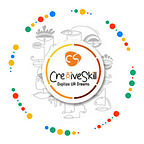The Impact of Raster To Vector Services in Today’s Digital Landscape
In today’s digital age, where visuals play a pivotal role in communication, the demand for high-quality vector graphics has soared. Raster-to-vector services have emerged as indispensable solutions, catering to businesses and individuals seeking to convert raster images into scalable vector formats. With the proliferation of online vector services, the process has become more accessible, efficient, and cost-effective.
Raster images, composed of pixels, are suitable for displaying photographs and complex images with intricate details. However, they lack scalability, leading to pixelation when enlarged. On the other hand, vector graphics, created using mathematical formulas, are resolution-independent, ensuring crispness and clarity at any size. This fundamental difference underscores the importance of raster to vector conversion services in various industries.
Enterprises rely on vector art conversion services to enhance their branding materials, including logos, icons, and illustrations. By converting raster images into vectors, companies can maintain consistency across different platforms and scale their graphics without compromising quality. Additionally, vectors facilitate easy customization, allowing businesses to adapt their visual assets to diverse marketing collateral.
Graphic designers and artists also benefit from online vector services, streamlining their workflow and expanding their creative possibilities. Whether it’s transforming hand-drawn sketches into scalable vectors or converting scanned artworks into editable formats, these services empower designers to unleash their creativity without technical constraints. Moreover, online platforms offer convenience and flexibility, enabling professionals to access vector conversion tools anytime, anywhere.
The architectural and engineering sectors leverage raster to vector services for digitizing blueprints, floor plans, and technical drawings. By converting raster scans into vector files, architects and engineers can edit and manipulate designs with precision, facilitating collaboration and project management. Vectorized drawings also ensure accuracy in measurements and scaling, essential for construction projects and spatial planning.
In the fashion and apparel industry, vector art conversion services play a vital role in creating vectorized versions of garment designs and patterns. Designers utilize these services to transform intricate fashion illustrations or textile prints into scalable vectors, facilitating the production process and enabling seamless integration with computer-aided design (CAD) software. Furthermore, vector graphics support the development of embroidery and screen printing designs, ensuring impeccable quality and fidelity.
E-commerce businesses leverage raster to vector conversion services to enhance product images for online catalogs and marketing campaigns. By converting raster photographs into vector illustrations, retailers can showcase products with clarity and consistency, enticing customers with visually appealing visuals. Additionally, vectors enable dynamic image manipulation, such as color adjustments and background removal, to meet the requirements of various digital platforms.
In conclusion, raster-to-vector services and online vector solutions have revolutionized the way businesses and individuals handle graphic content. From branding and design to engineering and e-commerce, the versatility and scalability of vector graphics offer unparalleled advantages in today’s visual-centric landscape. As technology continues to advance, these services will play an increasingly crucial role in shaping the future of digital imaging and visual communication.
